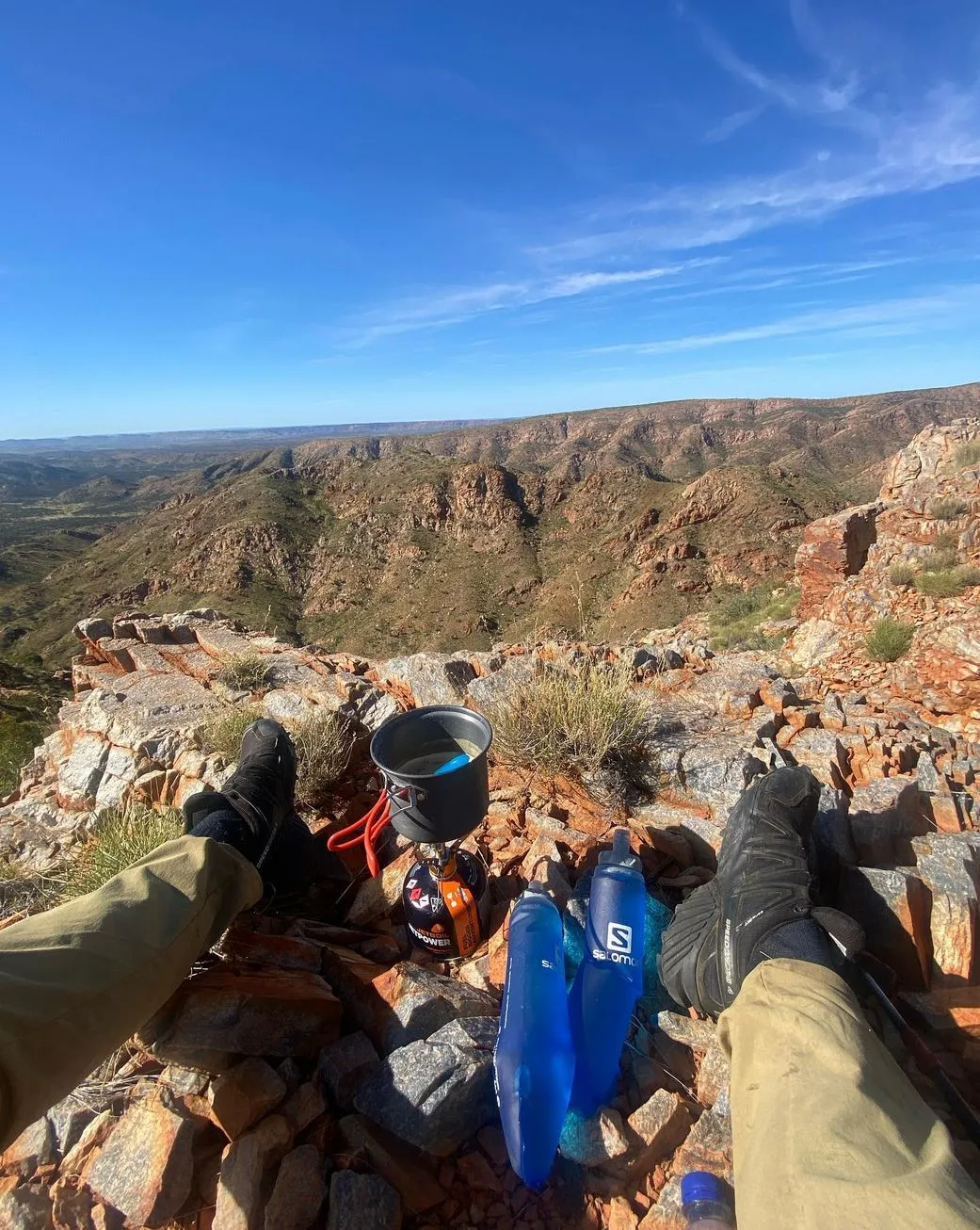The Larapinta Trail in the Northern Territory is a trek through some of Australia’s most wild and remote country. 223 km long, it takes you through the heart of the West MacDonnell Ranges and some of the most beautiful country in the country. If you’re planning to do the Larapinta Trail on your own, you might be asking: Can you do the Larapinta Trail solo?
This article will look at whether solo hiking the Larapinta Trail is possible, the pros and cons of solo hiking, how to prepare and tips for success on this big adventure.
Everything You Need to Know
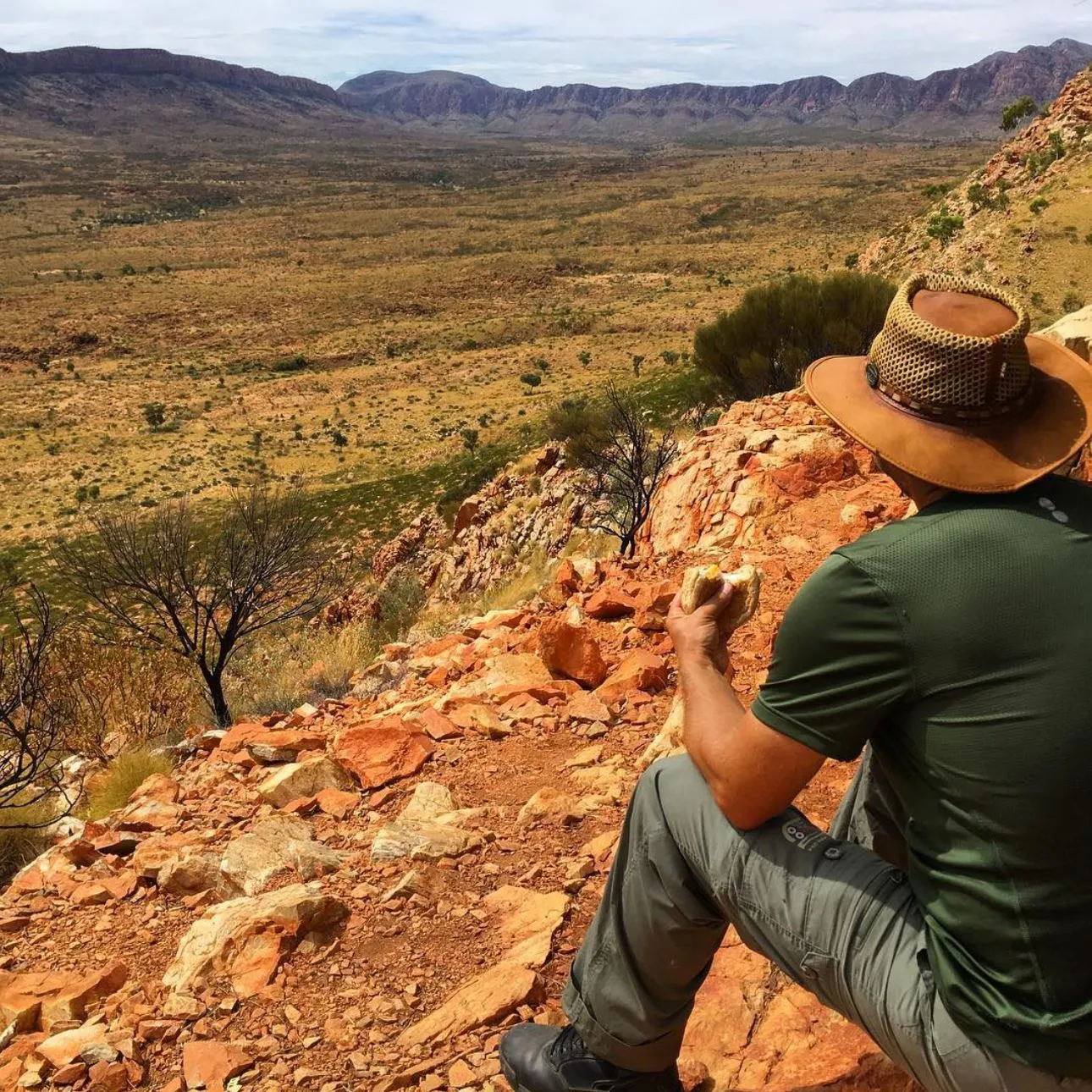
The Larapinta Trail goes from Alice Springs to Mount Sonder and takes in iconic spots like Ormiston Gorge, Redbank Gorge and Serpentine Gorge. It’s a dramatic country, from the rocky Razorback Ridge to the stunning Ellery Creek South. For experienced hikers, it’s a bucket list adventure that takes multiple days and has some of the most incredible views and scenery in Australia.
Solo vs Group Hiking
When it comes to hiking the Larapinta Trail, you have two options: solo or group. Both have their pros and cons.
Solo Hiking Benefits
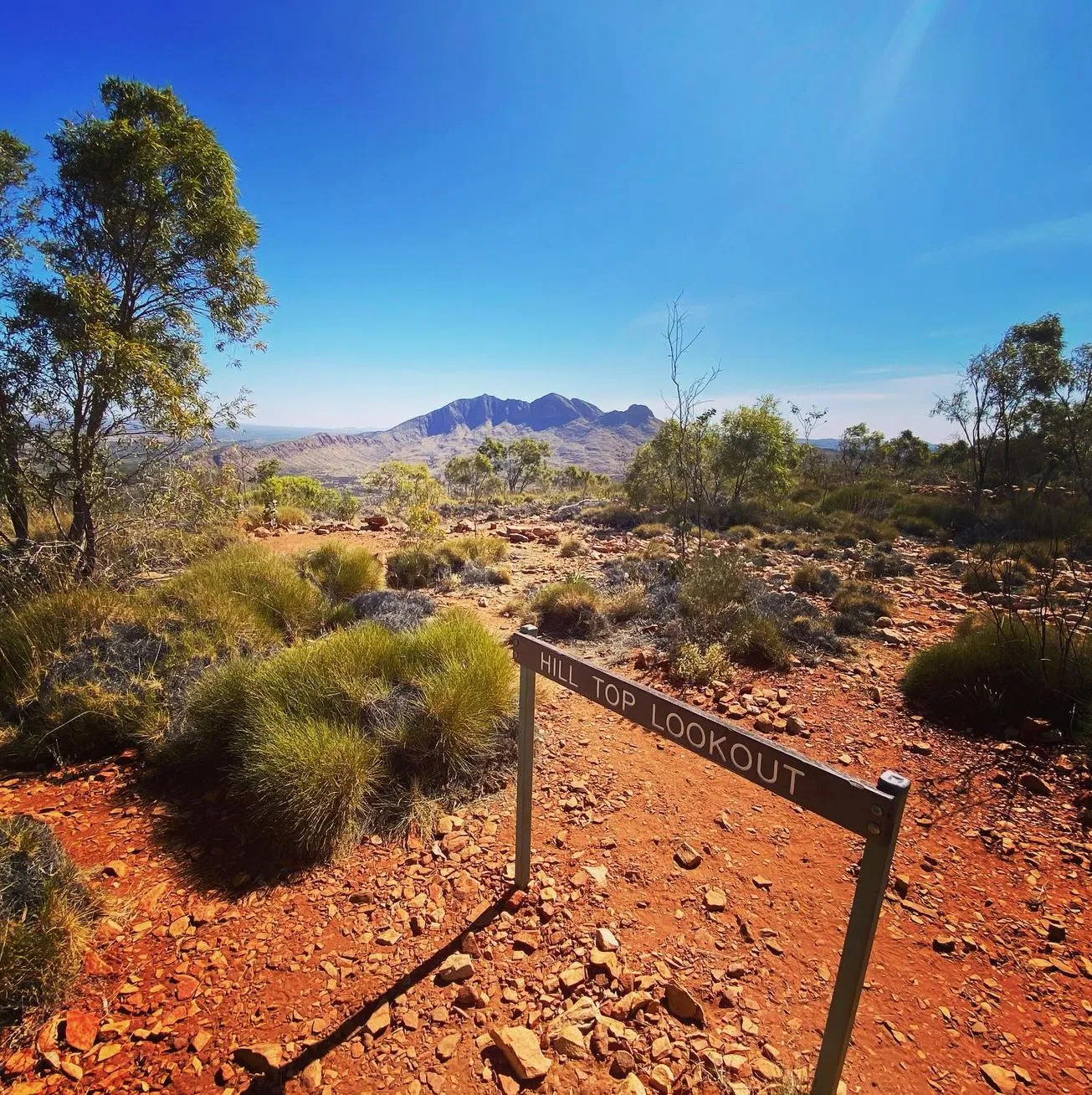
- Freedom and Flexibility: One of the best things about solo hiking is the ability to make your own decisions on pace, rest stops and how long to stay at each campsite. You can linger at Hill top Lookout or Waterfall Gorge without being rushed.
- A Personal Challenge: Hiking solo is a personal achievement. Completing the whole trail by yourself, especially navigating the Finke River or Ghost Gums, is a big tick.
- Connection to Country: Without other hikers around, you can have a deeper connection to the land, its history and the environment. The Larapinta Trail has many dry camps and campsites where you can get up close and personal with nature, from Fringe Lily Creek to Spencer Gorge.
Challenges of Solo Hiking
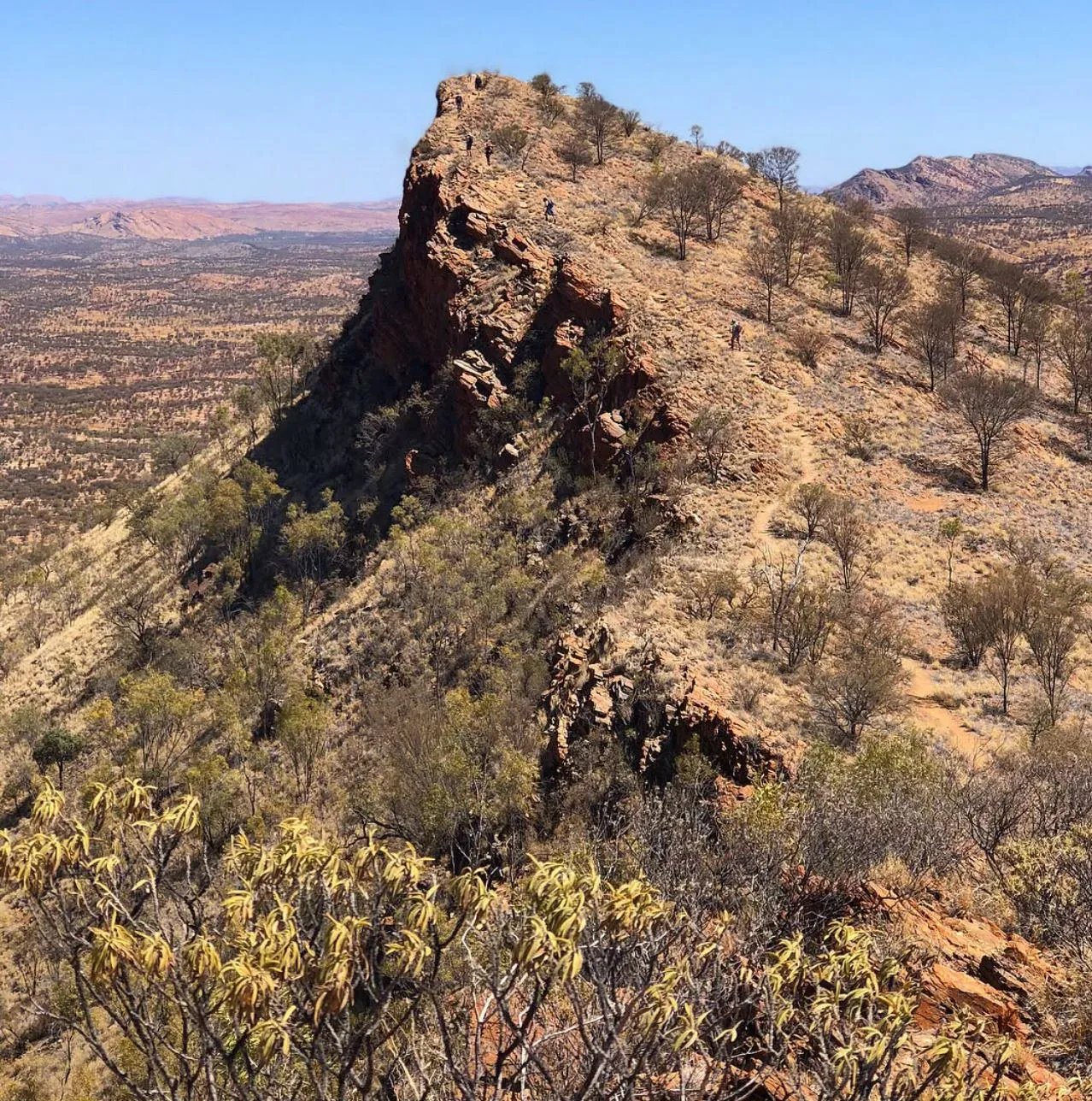
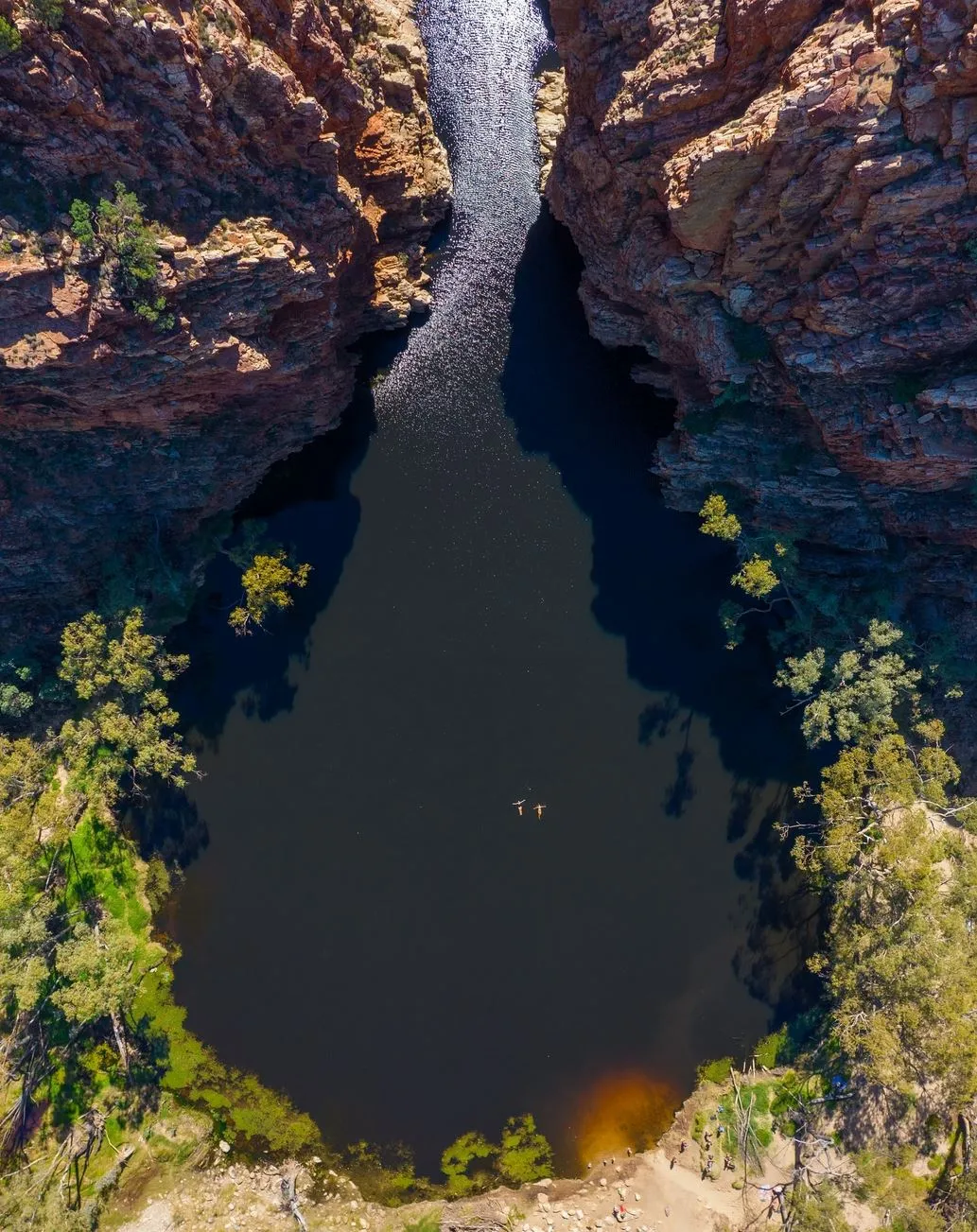
- Safety: The Larapinta Trail Trek takes you into remote areas, and water is limited in some sections with long stretches between water sources like Jay Creek, Serpentine Chalet Dam and Ellery Creek Big Hole. Solo hikers should carry extra water and make sure they have a water bladder or water bottle that can hold enough to get them between water stops. Travel insurance is highly recommended to cover unexpected emergencies.
- Navigation and Trail Conditions: The trail is well-marked with trail markers but traverses rocky terrain and mountainous terrain. Knowing how to navigate creek beds, dry river beds, and rocky gullies is key to staying on track. If you’re not an experienced hiker, consider using hiking poles for extra stability, especially on difficult sections like Euro Ridge or Millers Flat.
- Carrying a Heavy Pack: When hiking solo, you are responsible for carrying all your camping gear, including tents, food and water. This means a heavy pack will be your constant companion, and you’ll need to pack smartly. Dehydrated meals and instant noodles are often preferred for lightweight meals while also making sure you have enough energy providing snacks like muesli bars.
- No Support System: If something goes wrong – whether it’s a fall or an injury – you’re on your own. This lack of support can be scary, especially in areas like Redbank Gorge or Standley Chasm to Simpsons Gap, where help is far away. Having a power bank to keep your devices charged is important for emergencies.
Tips for Solo Hiking
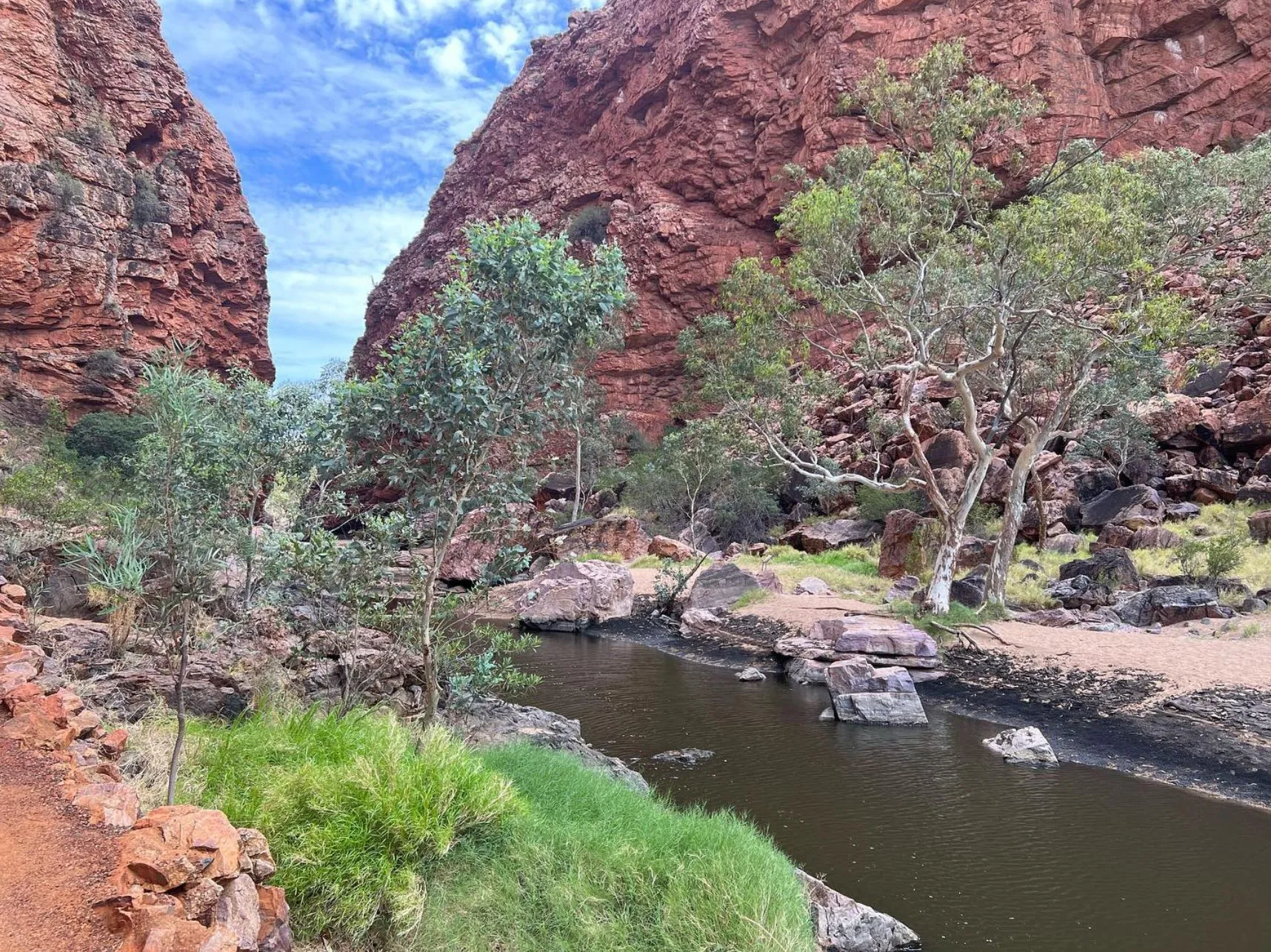
If you’re solo hiking, preparation is everything. Here are some tips to make your adventure a success:
- Get Fit and Ready: The trail is tough, with some really challenging sections. Make sure you train beforehand, including endurance hikes with a heavy pack to simulate the hiking season conditions.
- Plan Your Route and Know Water Spots: Plan your hike by checking each food drop-off point and knowing where the water sources are. Some sections, like Finke River and Hugh Gorge have water tanks or natural water sources, others, like Fringe Lily Creek and Millers Flat you’ll need to carry extra water for long distances.
- Camping and Food Drops: If you’re an independent hiker, consider using a Larapinta Food Drop service to lighten the load. You can arrange for food drop-off at Ellery Creek North or Mulga Camp. This way, you don’t have to carry several days of food and can focus on the hike itself.
- Pack: Along with camping gear and trail runners, make sure to bring hiking poles, a first aid kit, a power bank and a trail map. A bit of water and a water bottle at all times.
- Know the Trail Conditions: Trail conditions can change quickly. For example, some sections like Serpentine Gorge or Simpsons Gap may be impassable in wet conditions or have composting toilets but no other facilities.
When to Go Solo on the Trail
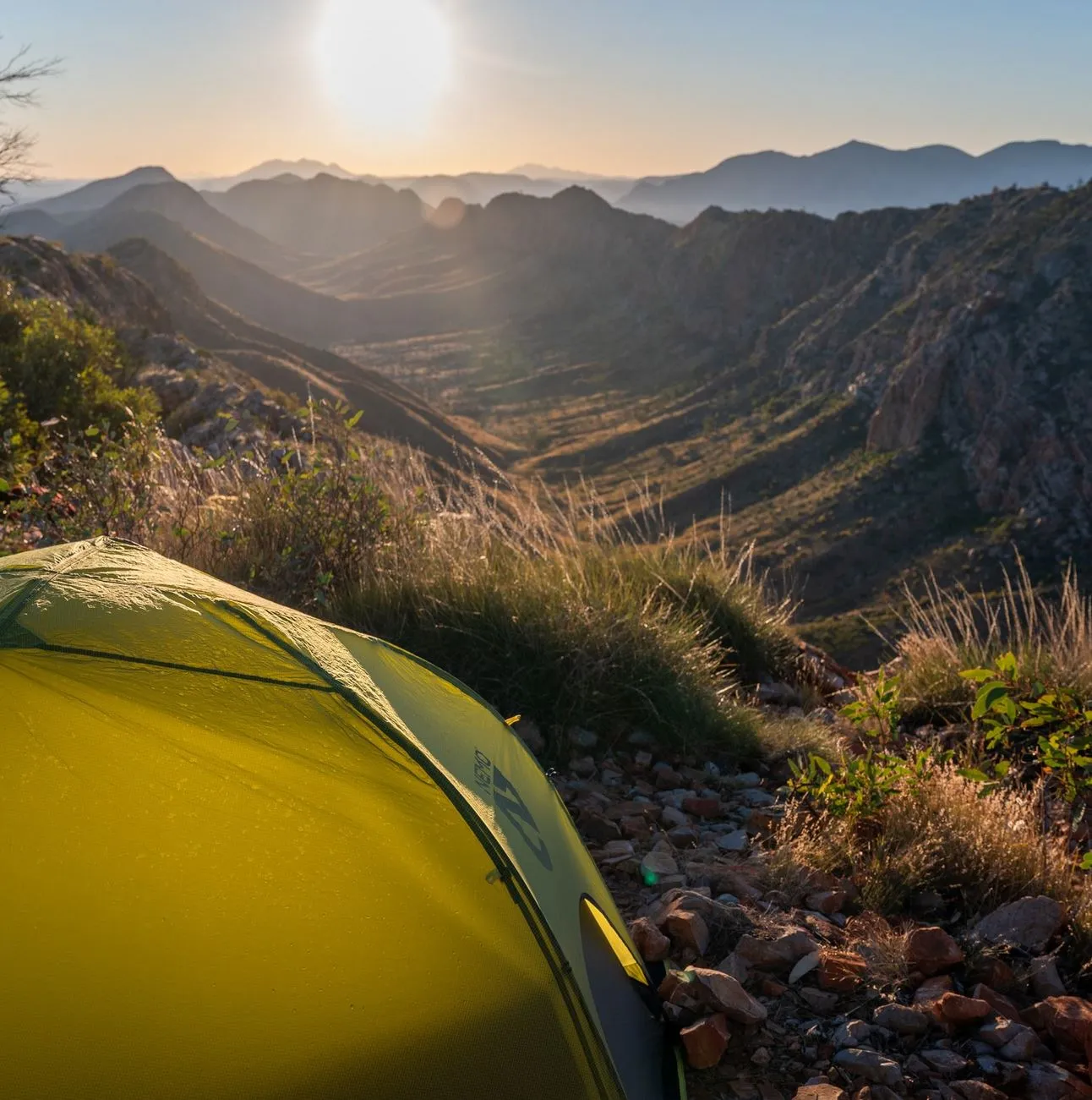
The best time to hike the Larapinta Trail is during the cooler months, May to September. During these months, the desert temperatures are more manageable, daytime temperatures 15-25°C and nighttime temperatures can drop to below 0°C. Hiking outside of this time, especially in summer, can be dangerous with temperatures over 40°C.
Conclusion
Solo hiking the Larapinta Trail is an option for experienced and well-prepared hikers. With the right training, planning, and preparation, you can achieve this. But if you’re new to hiking or unsure, then it may be worth considering a Larapinta Trek support service to ensure your safety and comfort.
Not keen on hiking solo? A Larapinta Trail Tour is an option, with experienced guides to lead the way, keep you safe and share the trail’s history and stories.
FAQ
Can I carry all my supplies myself on the Larapinta Trail?
Yes, but it will be hard. Consider using Larapinta Food Drops to lighten the load and have fresh supplies.
How much water should I carry on the Larapinta Trail?
Litres of water per day, especially in remote sections with no water like Razorback Ridge or Jay Creek.
Is it safe to hike the Larapinta Trail alone?
It can be safe for experienced hikers with the right preparation. Tell someone about your plans, carry enough water and have a means of communication.
Where can I camp on the Larapinta Trail?
There are designated campsites along the trail, such as Serpentine Chalet Dam, Ellery Creek Big Hole, and Fringe Lily Creek. Some campsites charge per person.
What do I need to bring for solo hiking the Larapinta Trail?
Pack, map, water bottles, camping gear, poles and food containers.
